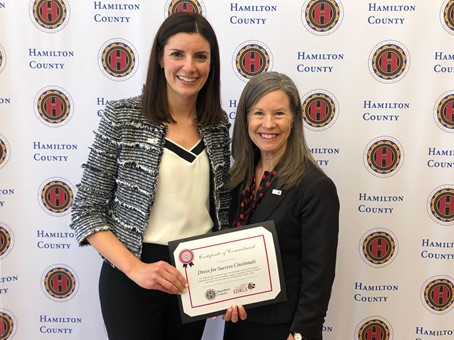
While women make up 50% of the population, they are still not represented as so. Women still experience a gender wage gap. This refers to the difference in earnings between men and women across many different industries. While many studies have been done on this topic, they all lead to the same consensus: Women consistently earn less than men. The gap is also wider for women of color.
For these reasons, the Hamilton County Commission on Women and Girls created the Hamilton County Pay Equity Commitment. This commitment is a voluntary project that attempts to close the gender and race-based age disparities in Hamilton County. Their purpose is to offer organizations with active measures and ideas that strive for equitable wages.
Equal pay differs from pay equity. For example, equal pay is shown when a female receives the same amount of pay for the same amount of work as a male. The Hamilton County Commission on Women and Girls describes pay equity as “an analysis that looks at equal pay for equal work but goes further to consider where underrepresented groups sit in an organization, helping us understand the power gaps that exist. Biases and lack of access to promotions, bonuses, and flexibility can perpetuate inequities across all levels of an organization, even if equal pay for equal work is in place.”

Pay Disparities in Cincinnati
The Women's Fund of the Greater Cincinnati Foundation conducted research that revealed pay disparities between white men and both white and women of color. According to their study, white women get 80 cents for every $1 earned by white men, whereas Black women earn 66 cents.
During the Covid-19 pandemic, pay discrepancies widened even worse.
According to the Women’s Fund, “Black women breadwinners are concentrated in the very occupations most affected by the COVID-19 pandemic, both as essential workers such as health care aides and as employees in the jobs most affected by furloughs and job loss, such as retail and food service.”
They interviewed 32 Black women and asked them to identify obstacles to their economic advancement. Some say that generational barriers prohibit them from progressing ahead, while others claim that economic disruption is a problem.
Findings consistently show that pay disparities are prevalent in both minority and non-minority populations, making it a significant concern.
This is where pay equity comes in, since it focuses on how we can better identify and address the challenges faced by minorities in the workplace.
All of the research conducted by the Women's Fund was used to develop creative strategies for other organizations and institutions to help women achieve economic independence. The research prompted us at Dress for Success Cincinnati to strengthen our own commitment to helping women succeed—including our own employees.

Our Promise
According to the Institute for Women’s Policy and Research, “If progress continue at the same rate as it has since 1985, it will take until 2059 to reach full pay equity between all women and men who work full-time, year-round. When comparing against white men’s earnings, the wait will be even longer for Black and Hispanic women (2133 and 2206, respectively).” This is why it is important for originations to promise and fulfill pay equity on their own.
In addition to signing the Pay Equity Commitment, we have taken steps such as increasing our pay scale, introducing health insurance and parental leave, develop an equitable interview process and engage in discussions on race and equity issues at the Board level. Dress for Success' mission is to be inclusive and supportive of all women, and these commitments helps us meet our objectives.
We are delighted to be able to fulfill our pledge alongside other outstanding non-profit and for-profit organizations, such as the YMCA, Cincinnati Reds, United Greater Way of Cincinnati and more. Dress for Success will continue to advocate and educate on behalf of disadvantaged groups who face pay injustice by joining the Hamilton County Pay Equity Commitment.
IWPR. (2022, February 22). The gender pay gap, 1985 to 2020-with forecast for achieving pay equity, by Race and ethnicity. IWPR. Retrieved July 28, 2022, from https://iwpr.org/iwpr-publications/quick-figure/the-gender-pay-gap-1985-to-2020-with-forecast-for-achieving-pay-equity-by-race-and-ethnicity/
Pay Equity Commitment. - Hamilton County (2022, April). Retrieved July 28, 2022, from https://www.hamiltoncountyohio.gov/government/open_hamilton_county/projects/commission_on_women_and_girls/pay_equity_commitment#:~:text=The%20Hamilton%20County%20Pay%20Equity%20Commitment%20is%20a,wage%20gap%20in%20Hamilton%20County.%20Who%20it%20Impacts
Pulse report - Greater Cincinnati Foundation. (2017, April 17). Retrieved July 28, 2022, from https://www.gcfdn.org/wp-content/uploads/2020/07/6.-2017-Applying-a-Gender-Lens-to-the-Wage-Gap.pdf